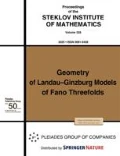Abstract
We consider a specific version of the authors’ approach to the synthesis of bases of discrete orthogonal transforms (DOTs). The approach takes into account the relation between the structure of basis functions of a transform and the existence of a certain numeral system on the (multidimensional) index set of an input signal. In contrast to Chernov’s prototype paper “Discrete orthogonal transforms with bases generated by self-similar sequences” (2018), which was concerned with DOTs associated with irredundant numeral systems (where each index of the input signal has a unique representation in a chosen numeral system), in the present paper we study the case of the so-called complete numeral systems. In this case, there is no bijection between the set of input indices of DOTs and the set of their digital representations. Potentially, such statements of applied problems naturally appear in image recognition, artificial intelligence, theory of formal languages, mathematical programming, and other areas where the analyzed objects are characterized by many heterogeneous attributes, which can be quantitative, qualitative, and mixed. There may be several copies of each object, and the copies may have inconsistent descriptions, which must be considered and analyzed as a whole. Such objects with many attributes can be represented as multisets (“sets with repetitions”). Since discrete spectral analysis is a basic tool for solving the described problems in the classical “multiple” interpretation of objects, we try to extend some ideas and methods of spectral analysis to the case of multiset objects.
Similar content being viewed by others
REFERENCES
A. B. Petrovskii, Spaces of Sets and Multisets (Editorial URSS, Moscow, 2003) [in Russian].
A. B. Petrovskii, Theory of Measurable Sets and Multisets (Nauka, Moscow, 2018) [in Russian].
M. Aigner, Combinatorial Theory (Springer, Berlin, 1978; Mir, Moscow, 1982). https://doi.org/10.1007/978-1-4615-6666-3
V. I. Baranov and B. S. Stechkin, Extremal Combinatorial Problems and Their Applications (Nauka, Moscow, 1989; Springer, Berlin, 1995). https://doi.org/10.1007/978-0-585-29602-9
V. M. Chernov, “Discrete orthogonal transforms with bases generated by self-similar sequences,” Komp. Optika 42 (5), 904–911 (2018). https://doi.org/10.18287/2412-6179-2018-42-5-904-911
V. M. Chernov, “Some spectral properties of fractal curves,” Machine Graphics Vision 5 (1–2), 413–422 (1996).
V. M. Chernov, “Tauber theorems for Dirichlet series and fractals,” in Proceedings of 13th International Conference on Pattern Recognition, Vienna, Austria, 1996, Vol. 2, Track B, pp. 656–661. https://doi.org/10.1109/ICPR.1996.546905
J. L. Brown, “Note on complete sequences of integers,” American Math. Month. 68 (6), 557–560 (1961). https://doi.org/10.2307/2311150
S. S. Pillai, “An arithmetical function concerning primes,” Annamalai Univ. J., 159–167 (1930).
The On-Line Encyclopedia of Integer Sequences (OEIS). https://oeis.org
M. Feinberg, “Fibonacci–Tribonacci,” Fibonacci Quart. 1 (3), 71–74 (1963).
T. D. Noe, “Primes in Fibonacci \(n\)-step and Lucas \(n\)-step sequences,” J. Integer Seq. 8, article 05.4.4 (2005).
T. L. Moore, “Using Euler’s formula to solve plane separation problems,” College Math. J. 22 (2), 125–130 (1991). doi: https://doi.org/10.2307/2686448
J. Steiner, “Einige Gesetze über die Theilung der Ebene und des Raumes,” J. Reine Angew. Math. 1, 349–364 (1826). https://doi.org/10.1515/crll.1826.1.349
Funding
This work was supported by the Ministry of Science and Higher Education of the Russian Federation according to the state task to the Federal Scientific Research Center “Crystallography and Photonics” of the Russian Academy of Sciences (agreement no. 007-GZ/Ch3363/26) within the study of numeral systems and by the Russian Foundation for Basic Research (project nos. 19-07-00357_a and 18-29-03135_mk) within the study of the machine arithmetics.
Author information
Authors and Affiliations
Corresponding authors
Additional information
Translated from Trudy Instituta Matematiki i Mekhaniki UrO RAN, Vol. 26, No. 3, pp. 249 - 257, 2020 https://doi.org/10.21538/0134-4889-2020-26-3-249-257.
Translated by E. Vasil’eva
Rights and permissions
About this article
Cite this article
Chernov, V.M., Chicheva, M.A. Discrete Orthogonal Transforms on Multisets Associated with Complete Sequences. Proc. Steklov Inst. Math. 313 (Suppl 1), S33–S39 (2021). https://doi.org/10.1134/S0081543821030056
Received:
Revised:
Accepted:
Published:
Issue Date:
DOI: https://doi.org/10.1134/S0081543821030056



